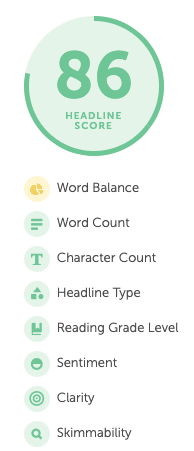There are many articles written about the value of blogs and how they help keep your website search engine optimized. Or, as we like to say, “feed the beast.” But some of you may be thinking, “That’s great, but where the heck do I start?”
If you don’t have a marketing department that helps your business stay up to snuff on the latest tactics for keeping customers coming to your website and, therefore, into your pipeline, the concept of blogging may be confusing and overwhelming.
Below we’ll walk you through the steps of how to write a blog the right way and get the best results.
What’s Your Blog Situation?
First, take a look at the list below. Determine which of these best describes you or your situation:
- I like to write.
- I’m a good writer.
- I have plenty of time to write.
- I have someone who helps me write good content regularly.
- We post several new blogs each month but aren’t seeing the results that warrant the effort.
If you like to write, that’s a great start. If you’re a strong writer, that’s even better. But the kicker where most people get stuck is that they lack the extra time in their day to write consistently. Dedicating time toward a blog strategy will make your overarching content marketing strategy far more successful.
If you answered “no” to any combination of questions 1-3, you could benefit from outsourcing your content marketing. Consistent, quality blogs will drive more prospects to your website. Managed effectively through a customer relationship management tool (CRM) and a thoughtful lead nurturing workflow, your investment in blogs will positively impact your bottom line.
Now, if you’re fortunate enough to be in a situation like #4, then you’re ahead of the game and maybe in good shape. However, if you’re investing resources into blog writing and not seeing results like #5, you may start to question the benefit.
Blog Reporting & Attribution
Assuming you have a reporting tool like Google Analytics and/or a marketing attribution tool like HubSpot in place, you’ll be able to see how well your blogs are performing relative to other pages on your website. If you don’t have these analytics tools (or understand how to interpret them), you won’t know what’s working and what isn’t.
If you do have them in place and you do not see your blog articles in the top-performing pages, or they get very few links, one of two things is happening:
- You have a good blog, but you’re not optimizing it properly, so not enough people see it to click on it.
- No one gives a hoot about what you wrote.
Fortunately, you can resolve both of these issues.
What Makes a High-Performing Blog?
If too few people can find your blog, you won’t get the return on your investment from creating it.
To increase your blog’s visibility, be sure you consider the following search engine optimization steps:
- Add meta descriptions
- Add page titles and headers
- Add anchor text
- Add images and a video
- Make sure your blog is optimized for mobile devices

Alternatively, if no one seems to care enough about your blog to click on it, there could be one or more issues at play. Use the list below to gut-check your blog strategy:
- Does your blog target a specific persona?
- Does your blog take a new perspective on a familiar idea, or does it share a brand new concept that your target audience will find helpful or valuable?
- Does it have a compelling title to attract your target audience?
While tempting to write for a general audience thinking that your blog will cast a wider net of prospects, usually the opposite is true. Don’t let the fear of narrowing your audience dissuade you from focusing on your best prospective customer. Zero in on your reader’s interests, pain points, hopes, and dreams and follow their engagement with you in your CRM.

And don’t spend your energy telling them something they already know or have heard numerous times before. Instead, give them something fresh that will get their attention. Firms like ours invest in helpful tools to identify what topics will resonate most with intended readers.
Lastly, readers need to make it past the title for them to engage with your blog and make it all worthwhile. So again, online headline graders can be helpful tools to reference before you post your next blog.
How many times per month should you blog?
Now that you know how to write a blog worth your time and effort, do it two times per month for starters and see how they perform. From there, make some additional adjustments and continue to hone your craft. Then, once you have the hang of it, make it three, then four per month, and so on.
If you still find yourself overwhelmed or with too little time on your hands to write well, write consistently and blog and optimize your post the right way, schedule a meeting with us, and we’ll put our content marketing team to work on your behalf.
About Incite Creative, Inc.: Incite Creative is a marketing advisory firm that works in an outsourced capacity. In short, we become your company’s chief marketing officer (CMO) and do so virtually and efficiently — saving you time and money. Since 1999 we’ve had the pleasure of building and boosting brands for a core set of industries. Our thoughtful process, experienced team, and vested interest in our client’s success have positioned us as one of the Mid-Atlantic’s most sought-after marketing partners for those looking to grow their brand awareness and bottom line. Stop paying for digital and traditional services you may not need. Our retainer, no mark-up model means our recommendations don’t come with any catch or commission. The advice we provide aligns with what you need and what fits within your budget. For more information, contact us at 410-366-9479 or [email protected].





